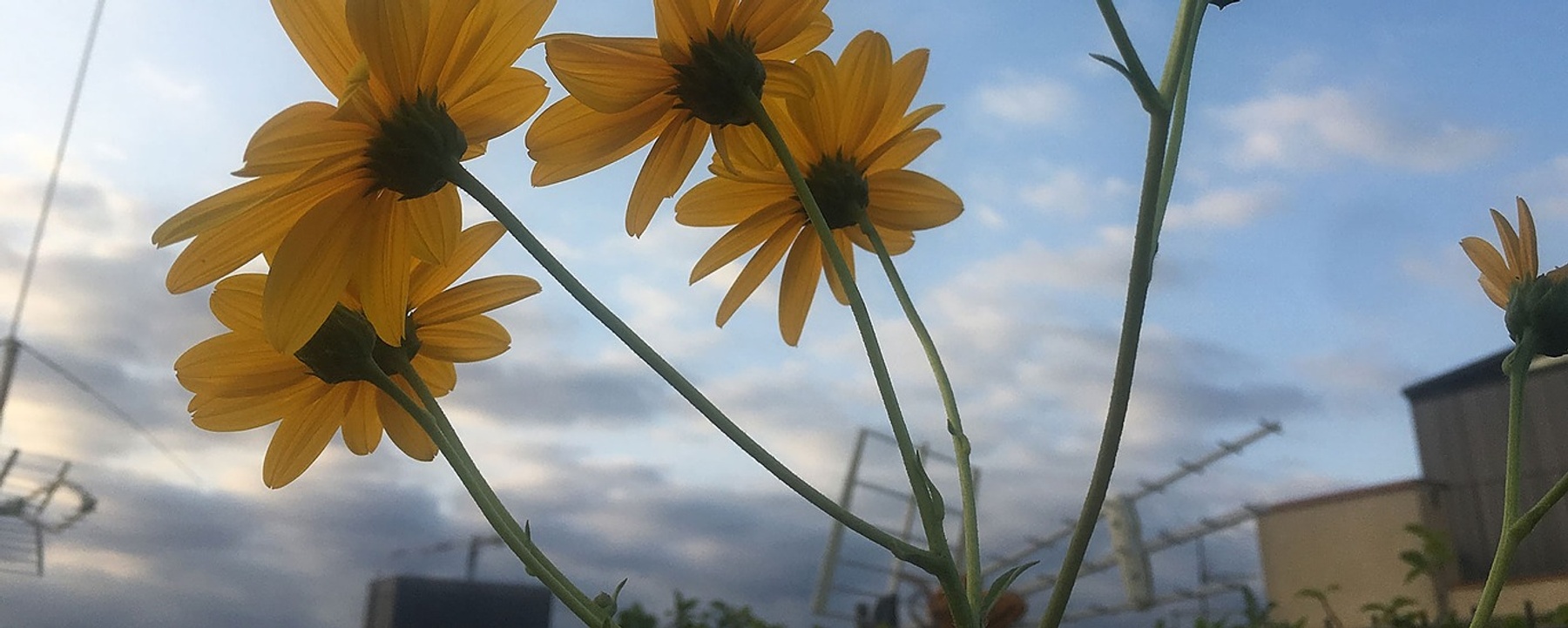
Sweet pumpkin pollination
Com pol·linitzar les flors de carabasseres per assegurar que donin fruit
So, like the good American I am, I celebrate two American holidays here in Barcelona. The two very best ones: Thanksgiving and Halloween. I like them because they are non-religious and because their basic feature is sharing with your neighbors.
But Thanksgiving is a bit tricky in Barcelona. While there is turkey, and you can even buy cranberries at the famous Boqueria Market (as long as you're a millionaire), it's not that easy to find a sweet pumpkin to make a proper pie. Sure, you can buy canned pumpkin, and you can also buy other varieties of pumpkin, but I have always thought it would be wonderful to grow a small sweet pumpkin for my own Thanksgiving dinner on the roof.
I planted one this year, on May 21, and was thrilled when it started to grow, and ecstatic when it started to spread its way around my rooftop urban garden. The vines are at least 20 feet long and mostly happy. I still have problems with yellowing leaves and some kind of scale, but the length of the vines seems to be able to outrun the problems, at least for now.
And I've been getting these lovely huge yellow flowers with little baby pumpkins at their base. Imagine my disappointment when one after another, those little baby pumpkinettes just drop off and die. I finally decided to consult Google about it, and found an article that said that the problem might be pollination. Turns out those little baby pumpkins that form beneath the base of female flowers aren't fertilized yet, they're just eggs.
Female pumpkin flowers only bloom for a few hours in the early hours of the day. They have sweeter, higher quality nectar than male flowers, and ants can tell the difference, flocking to the female flowers and mostly leaving male flowers alone. To get a pumpkin, some pollen from a male flower, which might be some distance away, has to get to the pistil of a female flower. Bees might do the job for you, but it turns out that bees don't like ants. So if your female flowers are covered with ants, the bees will stay away and your non-pollinated pumpkin eggs will shrivel up and die.
The solution is to help your female and male flowers to get it on. Get up early enough in the morning so that both kind of flowers are wide open. (If they've already started to shrivel up, it's probably too late. I tried prying them open one morning, but they were unresponsive.) Pick two or three of the male flowers and push the stamens into the middle of the female flower's pistil, trying to get as much of the pollen in there as you can. Think about all the seeds in a pumpkin: you need a tiny bit of pollen for each seed. Plus some extra for the ants and the bees and whatever falls by the wayside.
Then watch as the female flowers close up—it takes about three hours.
Over the next couple of days, the female flower will finish drying up and fall off, and if you're lucky, you'll see your baby pumpkin egg growing into a real pumpkin. It takes between 45 and 55 days for a baby pumpkin egg to turn into a real orange pumpkin. Since we're still at the beginning of September, it should be perfect timing for my Thanksgiving Pie! This is the first time I've done this, so I'll keep you posted on my progress.
But Thanksgiving is a bit tricky in Barcelona. While there is turkey, and you can even buy cranberries at the famous Boqueria Market (as long as you're a millionaire), it's not that easy to find a sweet pumpkin to make a proper pie. Sure, you can buy canned pumpkin, and you can also buy other varieties of pumpkin, but I have always thought it would be wonderful to grow a small sweet pumpkin for my own Thanksgiving dinner on the roof.
I planted one this year, on May 21, and was thrilled when it started to grow, and ecstatic when it started to spread its way around my rooftop urban garden. The vines are at least 20 feet long and mostly happy. I still have problems with yellowing leaves and some kind of scale, but the length of the vines seems to be able to outrun the problems, at least for now.
And I've been getting these lovely huge yellow flowers with little baby pumpkins at their base. Imagine my disappointment when one after another, those little baby pumpkinettes just drop off and die. I finally decided to consult Google about it, and found an article that said that the problem might be pollination. Turns out those little baby pumpkins that form beneath the base of female flowers aren't fertilized yet, they're just eggs.
Female pumpkin flowers only bloom for a few hours in the early hours of the day. They have sweeter, higher quality nectar than male flowers, and ants can tell the difference, flocking to the female flowers and mostly leaving male flowers alone. To get a pumpkin, some pollen from a male flower, which might be some distance away, has to get to the pistil of a female flower. Bees might do the job for you, but it turns out that bees don't like ants. So if your female flowers are covered with ants, the bees will stay away and your non-pollinated pumpkin eggs will shrivel up and die.
The solution is to help your female and male flowers to get it on. Get up early enough in the morning so that both kind of flowers are wide open. (If they've already started to shrivel up, it's probably too late. I tried prying them open one morning, but they were unresponsive.) Pick two or three of the male flowers and push the stamens into the middle of the female flower's pistil, trying to get as much of the pollen in there as you can. Think about all the seeds in a pumpkin: you need a tiny bit of pollen for each seed. Plus some extra for the ants and the bees and whatever falls by the wayside.
Then watch as the female flowers close up—it takes about three hours.
Over the next couple of days, the female flower will finish drying up and fall off, and if you're lucky, you'll see your baby pumpkin egg growing into a real pumpkin. It takes between 45 and 55 days for a baby pumpkin egg to turn into a real orange pumpkin. Since we're still at the beginning of September, it should be perfect timing for my Thanksgiving Pie! This is the first time I've done this, so I'll keep you posted on my progress.

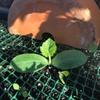

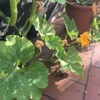


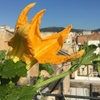



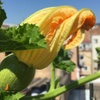

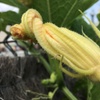

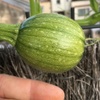

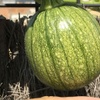
Write a comment
Log in with your account or sign up to add your comment.